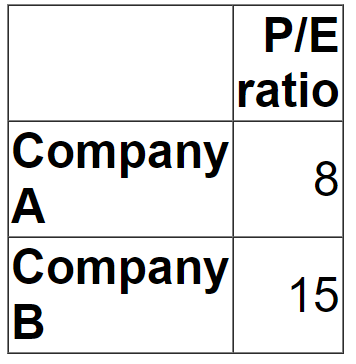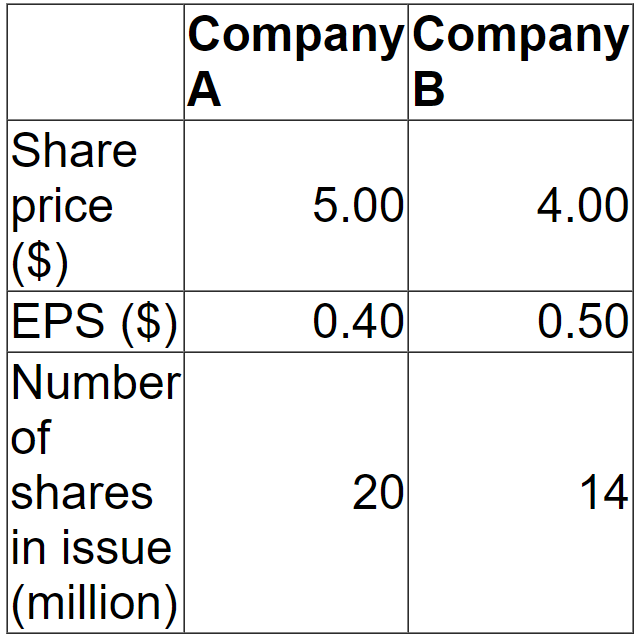CIMA F3 - Financial Strategy
A company is currently all-equity financed with a cost of equity of 8%.Â
It plans to raise debt with a pre-tax cost of 4% in order to buy back equity shares.
After the buy-back, the debt-to-equity ratio at market values will be 1 to 2.
The corporate income tax rate is 30%.
Â
Which of the following represents the company's cost of equity after the buy-back according to Modigliani and Miller's Theory of Capital Structure with taxes?
An analyst has valued a company using the free cash flow valuation model.
Â
The analyst used the following data in determining the value:
   • Estimated free cashflow in 1 year's time = $100,000
   • Estimated growth in free cashflow after the first year = 5% each year indefinitely
   • Appropriate cost of equity = 10%Â
The result produced by the analyst was as follows:
Value of equity = $100,000 (1+0.05)/0.10 = $1,050,000
The analyst made a number of errors in determining the value.Â
Â
By how much has the analyst undervalued the company?
Company A is a large listed company, with a wide range of both institutional and private shareholders.Â
It is planning a takeover offer for Company B.
Company A has relatively low cash reserves and its gearing ratio of 40% is higher than most similar companies in its industry.
Â
Which TWO of the following would be the most feasible ways of Company A structuring an offer for Company B?
A consultancy company is dependent for profits and growth on the high value individuals it employs.
The company has relatively few tangible assets.
Â
Select the most appropriate reason for the net asset valuation method being considered unsuitable for such a company.
WX, an advertising agency, has just completed the all-cash acquisition of a competitor, YZ. This was seen by the market as a positive strategic move byWX.
Which THREE of the following will WX's shareholders expect the company's directors to prioritise following the acquisition?
Two companies that operate in the same industry have different Price/Earnings (P/E)Â ratios as follows:
  
Â
Which of the following is the most likely explanation of the different P/E ratios?
Modigliani and Miller are the main proponents of the view that the dividend policy is irrelevant to the value of a company's shares.
They argue that a company that continually reinvests its entire earnings would generate the same shareholder wealth if it engaged in a policy of high dividends and financed its expansion with funds obtained from rights issues.
Â
Which THREE of the following statements are assumptions that are required in order to support this proposition? Â
LPM Company is based in Country C. whose currency is the CS
It has entered Into a contract to buy a machine in three months' time. The supplier is overseas and the payment is to be made in a different currency from the CS
The treasurer at LPM Company is considering using a money market hedge to manage the transaction risk associated with a payment.
The assumptions of interest rate parity apply
Which THREE of the following statements concerning the use of a money market hedge for this supplier payment are correct?
Company A is planning to acquire Company B at a price of $ 65 million by means of a cash bid.
Company A is confident that the merged entity can achieve the same price earnings ratio as that of Company A.
Â
 
Â
What does Company A expect the value of the merged entity to be post acquisition?  Â
Â
A company’s statement of financial position includes non-current assets which are leased, the tax regime follows the accounting treatment.
Which cash flows should be discounted when evaluating the cost of lease finance?



